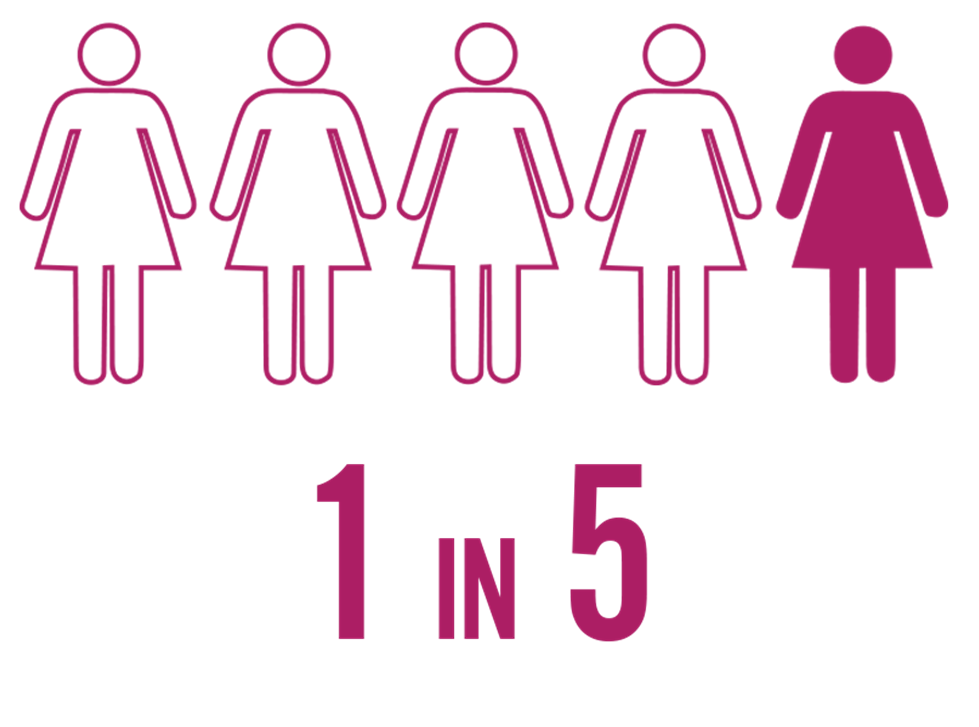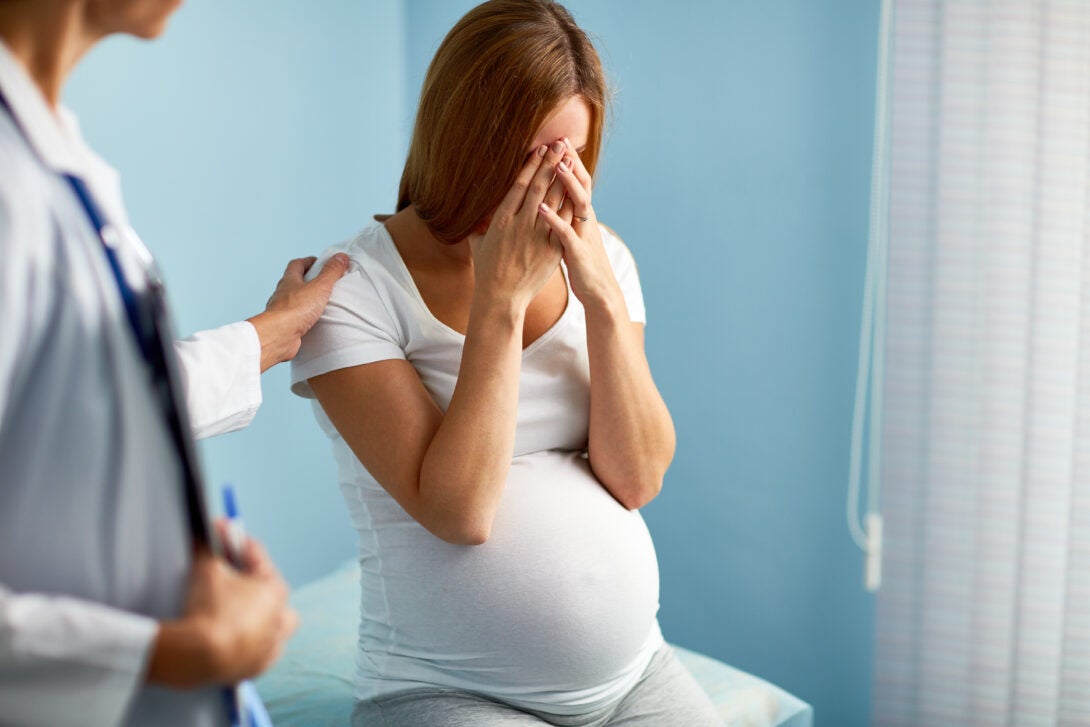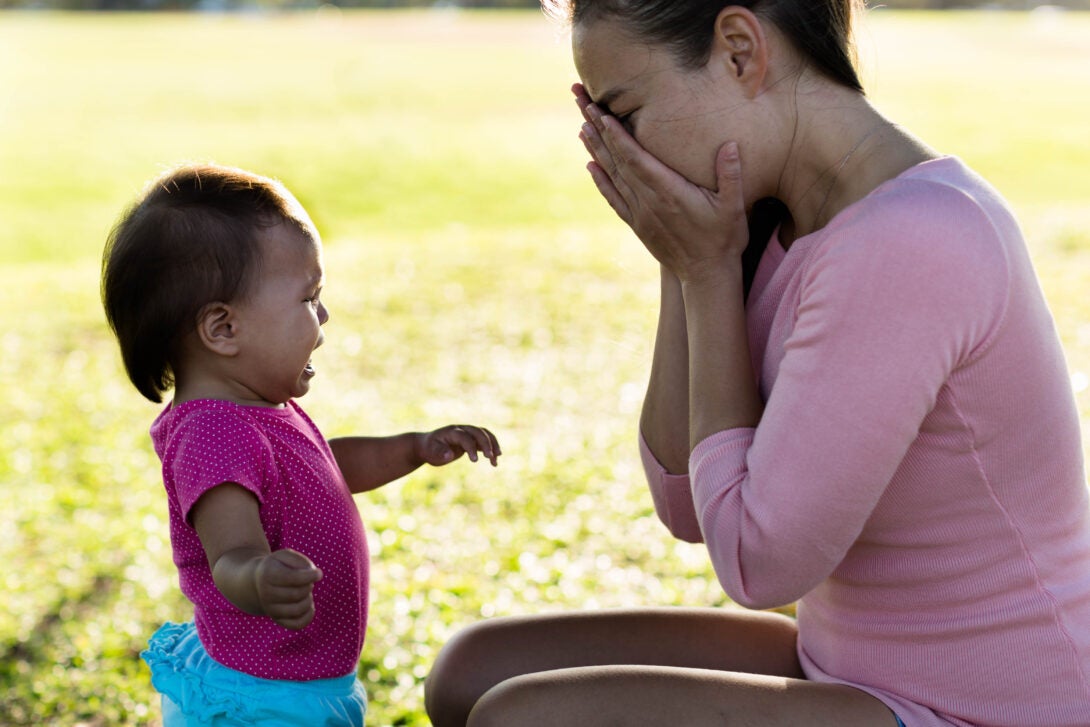Perinatal Depression
Useful tools and resources Heading link
Perinatal depression Heading link

Perinatal depression is defined as depression during pregnancy up to one year postpartum. It is the most common complication of pregnancy and can affect up to 1 in 5 women according to the CDC. Perinatal depression (PD) is twice as common as Gestational Diabetes (CDC, 2018).
Perinatal depression frequently goes unrecognized. Fewer than 20% of women affected disclose mood symptoms to a healthcare provider (Prevatt, 2018). Depression screening rates are suboptimal and recent changes to recommendations have advocated for increased screening in pregnancy and the postpartum period (ACOG, 2016; NICE, 2014; USPTF, 2016). Even when women screen positively for depression they often do not receive adequate mental health treatment.
Quote Heading link
A recent 2016 study found only 8.6% of pregnant women and 6.3% of postpartum women diagnosed with depression received adequate treatment (Cox, 2016).

Women with perinatal depression have historically low rates of help-seeking behavior and often also struggle to access care (Bauer, 2017; Gress-Smith, 2012; McGarry 2009). Lack of provider treatment knowledge, fear of medication risks, and the under-recognition of the risks of maternal mental illness to the mother-infant dyad limit adequate treatment.
Perinatal depression is associated with increased risk of poor prenatal care, maternal substance use, suicide, and multiple poor obstetric outcomes including preterm birth and operative deliveries (Grigoriadis, 2013; Şahingöz 2014). Postpartum depression is also associated with parenting difficulties, impaired attachment/bonding, and poorer child functioning at school and home (Avan, 2010; Field, 2011; Lodgson, 2006).
Long term, children with depressed mothers have higher rates of adolescent depression and difficulties in interpersonal relationships (Verbeek,2012).

Proper recognition and treatment of perinatal illness reduces maternal and child psychiatric symptoms, improves the quality of mother-child interactions and decreases risk of adverse childhood experiences (Pilowsky, 2008). Treatment may also avert adverse pregnancy outcomes related to antenatal depression (Venkatesh, 2016).
Perinatal Depression in Fathers Heading link
The Maternal Mental Health Leadership Alliance curated a fact sheet to discuss the prevalence, risk factors, impact and treatment for fathers who may be experiencing perinatal depression.
Doc Assist Can Help!
⇒ screening tools and communicating effectively with patients regarding diagnosis and treatment
⇒ educate about risks of psychotropic medications in pregnancy or lactation
⇒ selecting psychotropic agents with lowest risk profile
⇒ weighing treatment options versus lack of treatment in the perinatal period
⇒ symptoms to monitor in breastfeeding infants exposed to psychotropics
⇒ evidenced based non-pharmacological treatments for perinatal mood disorders
Schedule a Consultation
Recognizing Perinatal Depression Heading link
Perinatal depression presents with:
- Depressed mood or severe mood swings
- Excessive crying
- Difficulty bonding or lack of interest in baby
- Withdrawing from family and friends
- Changes in appetite
- Inability to sleep (insomnia) or sleeping too much
- Feeling overwhelmed or inability to make decisions
- Fatigue or loss of energy
- Decreased interest and pleasure in activities previously enjoyed
- Intense irritability and anger
- Feeling like a “bad mother”
- Hopelessness
- Feelings of worthlessness, shame, guilt or inadequacy
- Anxiety especially anxiety related to baby’s health and safety
- Recurrent thoughts of death or suicide
- Thoughts to harm baby
Other Perinatal Mental Health Disorders Heading link
Perinatal depression is the most studied and publicized pregnancy-related mental health condition but pregnancy is also associated with onset or worsening of other disorders such as:
- Anxiety
- PTSD
- Postpartum Psychosis
- Bipolar Disorder
- OCD symptoms